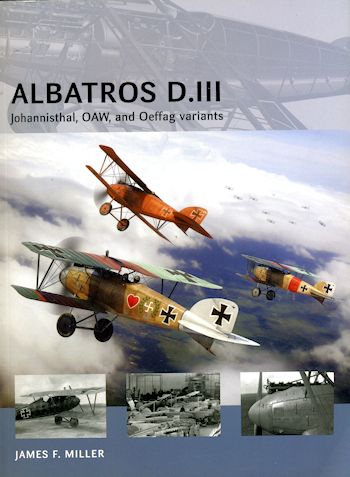 The
pace of technology in WWI was greater than probably any time in history before
it. This was very obvious when it came to aviation. An aircraft type would reach
ascendency and within a very short period of time, that would be gone, replaced
by even better types from the other side.
The
pace of technology in WWI was greater than probably any time in history before
it. This was very obvious when it came to aviation. An aircraft type would reach
ascendency and within a very short period of time, that would be gone, replaced
by even better types from the other side.
One of the more graceful WWI fighters was the German Albatros. When the
D.I was first introduced, it was hands above what the British and French were
flying. Thanks to the greater power and reliability of their in-line, water
cooled engines, the Germans were able to pretty much initiate and then break
away from combat. The D.I was superceded only a few months by a revised version,
the D.II, which learned from the earlier design and subsequently corrected some
of the deficiencies in it. This was just as quickly replaced by the D.III, and
aircraft that ruled the sky in very late 1916 and into early 1917.
The D.III differed from the earlier versions by having a sesquiplane
configuration, where the lower wing was smaller than the upper. This resulted in
improved lower vision for the pilot, but also resulted in several lower wing
failures during high stress maneuvers. The Albatross D.III was built by three
companies; Johannisthal, OAW and Oeffag. Only Oeffag built planes were
constructed a bit more robustly to circumvent this issue, while the other
manufacturers simply added strengthening plates, something that helped but never
eliminated the issue.
The D.III allowed the German air service to dominate the air war over
the front. The British and French were able to shoot some down, but it was not
easy. Many of the Germany's top aces flew the Albatros D.III at one time or
another during their careers. These sleek planes were vividly painted in
different colors and designs in an effort to allow pilots to identify their own
aircraft in the heat of battle. It made for some of the most colorful wartime
combat planes every flown.
Unfortunately for the Germans, by the summer of 1917, the D.III was
itself being eclipsed by the British SE.5, Putp and others including the French
SPAD VII. The D.V was developed to combat that, but unfortunately, it was little
better than the D.III. It wasn't until the Fokker D.VII appeared in 1918 that
the Germans had a top quality aircraft, but by that time things were going down
hill. Interestingly, the Oeffag plane in Austria continued to improve the D.III
with upgraded engines, and never built the D.V, allowing the Austrians to
maintain, if not ascendency, then at least parity with the planes they faced.
This book by James Miller looks into the background and the development
of the Albatros D.III as well as the aircraft that came before it and after it.
It looks at the differences between the aircraft built by the various factories.
This includes the camouflage schemes put on the planes and the factory painting
that was done. There are a goodly number of combat reports as well as
comparisons between the different aircraft, especially the different series
produced by Oeffag, who continued to develop the type.
Chock full of excellent period photos as well as full color art work and
profiles, it is a superb book for any WWI fan or those who want to know more
about this important German aircraft. A great read and highly recommended.
May 2014
For more on the complete line of Osprey books,
visit www.ospreypublishing.com. In the US, it is
Osprey Direct at 44-02 23rd St, Suite 219, Long Island City, NY 11101., where you can
get a catalogue of available books.
If you would like your product reviewed fairly and
fairly quickly, please
contact
the editor or see other details in the
Note to
Contributors.
 The
pace of technology in WWI was greater than probably any time in history before
it. This was very obvious when it came to aviation. An aircraft type would reach
ascendency and within a very short period of time, that would be gone, replaced
by even better types from the other side.
The
pace of technology in WWI was greater than probably any time in history before
it. This was very obvious when it came to aviation. An aircraft type would reach
ascendency and within a very short period of time, that would be gone, replaced
by even better types from the other side.